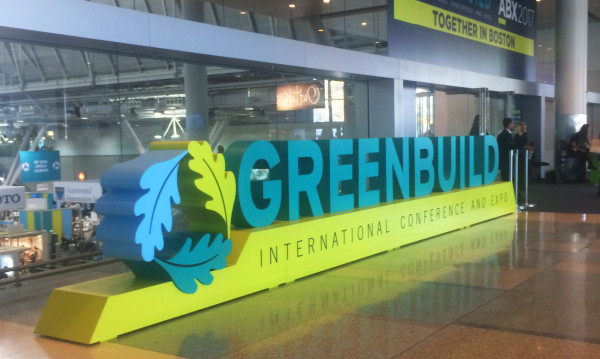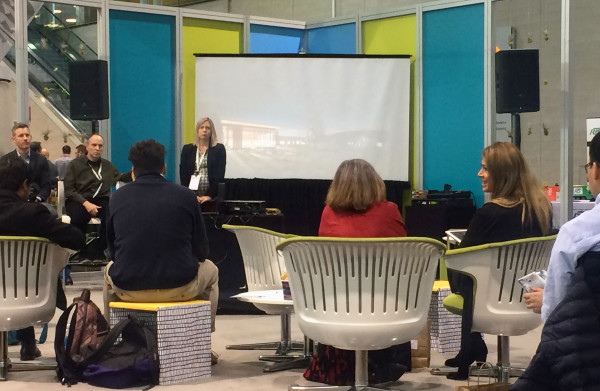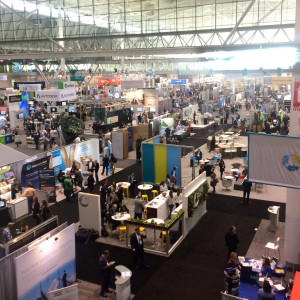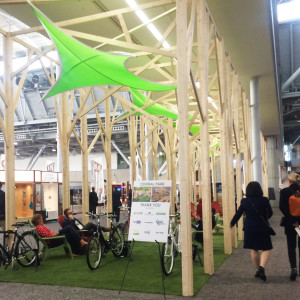Note: Every year the U.S. Green Building Council holds a conference called Greenbuild on cutting-edge sustainable building and design practices. This year’s conference and expo were in Boston, MA, hosting over 24,000 professionals in related fields and an expo hall of 700 exhibitors.
All anyone could talk about at this year’s Greenbuild was zero.
Building greener and LEED (Leadership in Energy and Environmental Design) certification have long proven to be achievable goals; industry leaders are pushing forward to bigger goals – to net zero energy, net zero water, and, most ambitiously, net zero waste. Zero waste is defined in this context as going past our normal mantra of reduce, reuse, recycle, and creating a goal of sending nothing to a landfill or an incinerator (“No Bury, No Burn”). I attended presentation after presentation with designers, builders, city officials, waste managers, and product reps all telling us how they were striving to achieve these “zero” goals. Time and time again presenters discussed the benefits that net zero had brought their clients (namely not having an energy or water bill), but in the end they all said they had done it because it was the “right thing to do.” One of my sessions – “Zero Waste Planning for Universities and Businesses” – spoke on how much of this trend has stemmed from college campuses, as many times there is the desire, the activism, and the bodies to help enact a policy and put it in place.
Weeks before the conference, GBCI (the administrating body of LEED rating) launched their newest rating system – Total Resource Use and Efficiency (TRUE), more info here – further reflecting their commitment to advance responsible waste reduction practices. The conference itself was even certified as a zero waste event and had 9,000 SF of the expo floor powered by energy collected on site. While net zero may not be possible for many of our clients in the immediate future, striving towards that goal has huge benefits. Besides being better for the environment, net zero buildings have no energy or water costs (net positive buildings can even get money back) and are typically designed for the maximum amount of natural lighting and comfort by means of passive (non-mechanical) heating and cooling strategies. Several other education sessions I had the chance to attend centered around a renewed focus on selling sustainability to clients through similar comfort and health based benefits. This philosophy of benefit-based green marketing reflects the changes made for the newest version of the LEED rating system – a prioritization of human well-being and satisfaction. These and other sessions are a wonderful opportunity for ensuring that our firm stays up to date on the newest technologies and practices.
In addition to the learning sessions, Greenbuild has a packed expo floor showcasing green products. Besides net zero technologies (such as the “solar smartflower” powering a portion of the expo), the multitude of booths offered only a few ground-breaking products – including smart/auto-tinting glass and new composite wood studs. So while big name speakers (Bill Clinton and Neil deGrasse Tyson) were in ample supply, the expo floor felt smaller in scale than years past. But that seems fitting for a conference looking to do more while causing less damage to the environment. Greenbuild shouldn’t be about flashy booths and promotional conference giveaways, this only expends carbon and adds to the waste stream. Instead it should be about a gathering of people wanting to learn and innovate.

 By: Nicole Esser
By: Nicole Esser 


